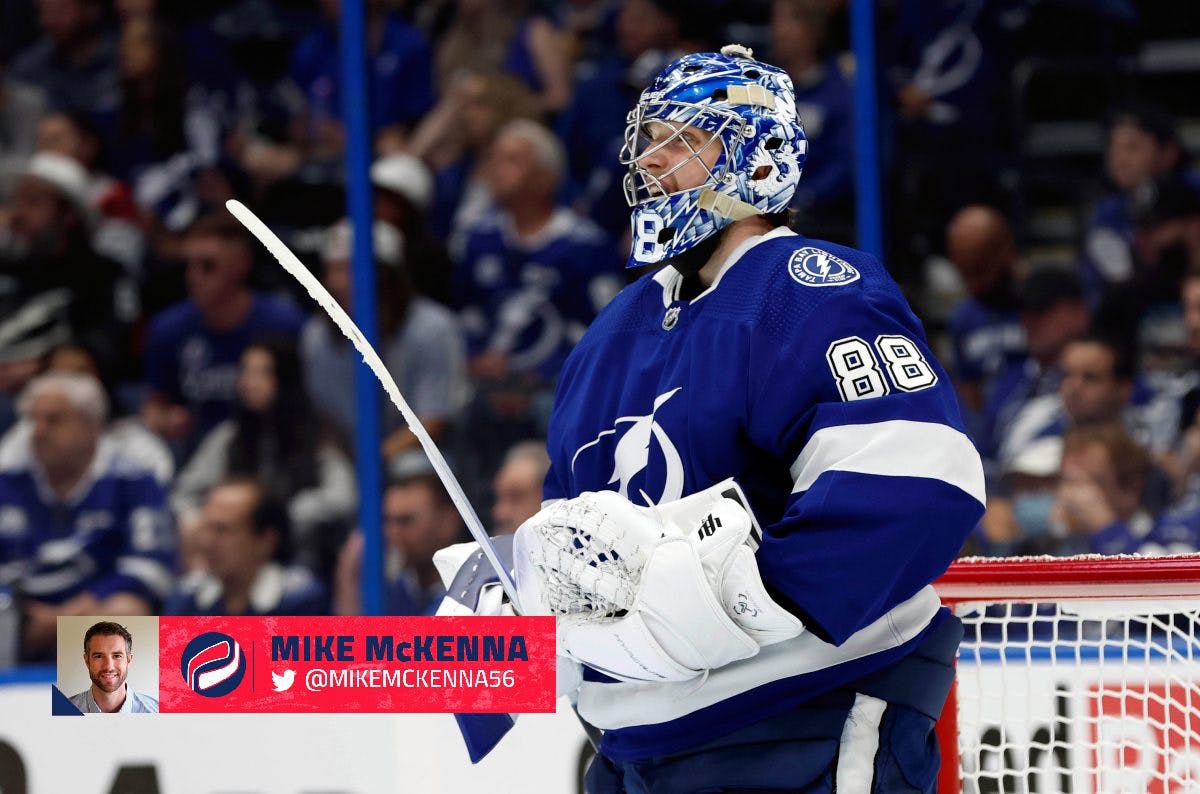Durability is a skill – and it’s one of Andrei Vasilevskiy’s best

“The best ability is availability.”
I’ve always thought this quote matters more in hockey than people realize, especially when it comes to goaltenders. The hard truth is that if a player isn’t in the lineup on a consistent basis, what good are they to the team?
Every year there are NHL franchises that make – in my mind – questionable decisions in obtaining players that are chronically injured. And inevitably when those players get hurt I end up shaking my head in wonderment.
But then again, I understand the allure to general managers around the NHL. Not every player with a history of injuries will continue down that path. Sometimes it really is just bad luck. And if you can get a quality player at the right price, it makes sense to gamble that they will be able to remain healthy.
But I also think there is a skill at protecting oneself. A player like Nicklas Lidstrom hardly ever missed time on the ice because he was so adept at surviving or avoiding dangerous situations. He simply knew where to be on the ice to take care of himself.
That same awareness extends to goalkeepers. I like to argue that durability is skill, not just a function of biomechanics. And I think Tampa Bay Lightning netminder Andrei Vasilevskiy is one of the best at protecting his body.
Take this example from Game 3 of the eastern conference final against New York, when Rangers forward Frank Vatrano went crashing into the Lightning net along with Tampa Bay defenseman Ryan McDonagh.
Frank Vatrano 2-min interference on Vasilevskiy#NYR 2 #Lightning 2 P3 pic.twitter.com/UcoP20GC22
— Sᴘᴏʀᴛs 24/7 (@Sports_24x7_) June 5, 2022Vatrano received a two-minute minor for goalie interference on the play. But watch how Vasilevskiy is able to protect himself while still making the initial save.
I love that Vasilevskiy uses a quick backhand pokecheck to strip the puck from Vatrano. It’s an old-school play that should still be in every goaltender’s toolbox.
But what happens next really catches my eye. Vasilevskiy is able to quickly get to his feet and turn his shoulder just before impact with Vatrano. It’s a split-second decision that allows the Lightning netminder to accept the impact.
To me, that’s the key. Vasilevskiy did everything he could to prepare for the collision. And that’s a byproduct of awareness combined with experience.
Believe it or not, this type of play happens occasionally in practice when players are driving the net. And it didn’t take long into my career to decide that the risk wasn’t worth the reward. If I knew the player attacking was reckless, and it looked like a collision was imminent, I’d step out of the net.
It wasn’t something I did on a regular basis. Maybe once or twice a year. But I knew that I was most valuable to my team if I was healthy. And allowing myself to get run over in practice didn’t mesh with that ethos.
I never missed a regular season or playoff game in my life due to an injury. And I have no doubt that some of the opportunities I received at the NHL level were due to my durability. Even if I wasn’t the best option in goal for an organization, I was available.
To me, it was about avoiding the collision whenever possible. Which is easy in practice. If I abandoned ship and the puck went in the net, so what. It was just one of many repetitions. But in a game, the save still had to be made.
There’s a fine line between self-preservation and doing what’s necessary to make the save during games. Fortunately for Vasilevskiy, he was able to do both. But that’s not always possible.
For example, take the second-round, Game 3 incident between St. Louis Blues netminder Jordan Binnington and Colorado Avalanche forward Nazem Kadri.
Replay of collision by Kadri into Binnington#GoAvsGo 0 #WeAllBleedBlue 1 P1 pic.twitter.com/KmrgBgEmft
— Sᴘᴏʀᴛs 24/7 (@Sports_24x7_) May 22, 2022Binnington is trying to make a rebound save. He’s outstretched and unable to protect himself from the inevitable impact with Kadri.
It’s the type of situation that makes goaltenders nervous. Facing down 100 mph shots isn’t scary. It’s routine. But seeing more than 400 pounds of human body mass hurtling towards your crease at speed? That’s daunting.
Ultimately it’s the goaltender’s job to make the save. And Binnington did. But he suffered a knee injury on the play and was not available the rest of the series against the Avalanche.
I think it’s really important to note that luck really does factor in. I don’t think Binnington could have done anything differently to protect himself. He did what was necessary to keep the puck out of the net.
No doubt I was lucky several times during my own career. There were near misses and major collisions that my body somehow survived unscathed.
When you watch how Vasilevskiy handled the Vatrano sequence, I think it’s pretty obvious why he’s been so durable – he possesses elite awareness and athleticism. The Lightning goaltender has played more than 50 games in every full 82-game NHL season dating back to 2016.
I believe the greatest goaltenders all have something in common. Longevity. They’re constantly available. That’s Vasilevskiy. And I believe it’s a big reason why he’ll eventually be considered one of the best to ever play the position.
_____
POINTSBET CANADA IS LIVE IN ONTARIO

PointsBet Canada has officially launched in Ontario! Get more details right here!
Recently by Mike McKenna
- McKenna’s Musings: Dare to dream of Evander Kane vs. Ryan Reaves in the Stanley Cup final
- Breaking down each Round 3 goalie matchup in the Stanley Cup playoffs
- McKenna’s Musings: Why goalies accept the risk of cat eye cages
- How did the Minnesota Wild melt down in Round 1 against the St. Louis Blues?
- Ryan Getzlaf and why leaving on your own terms matters